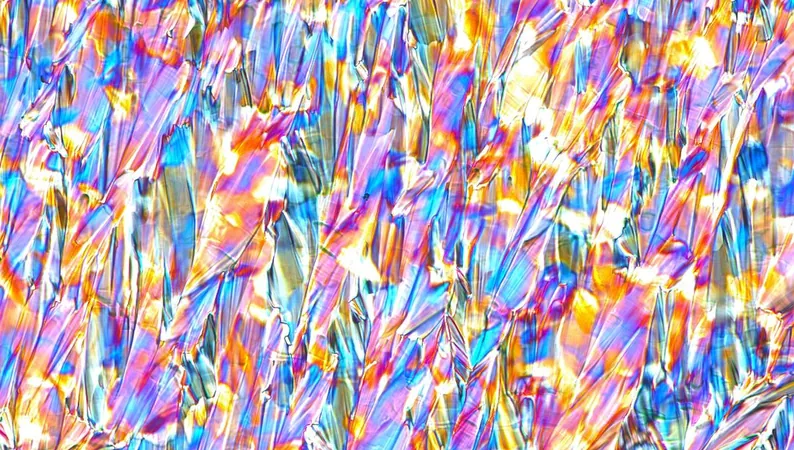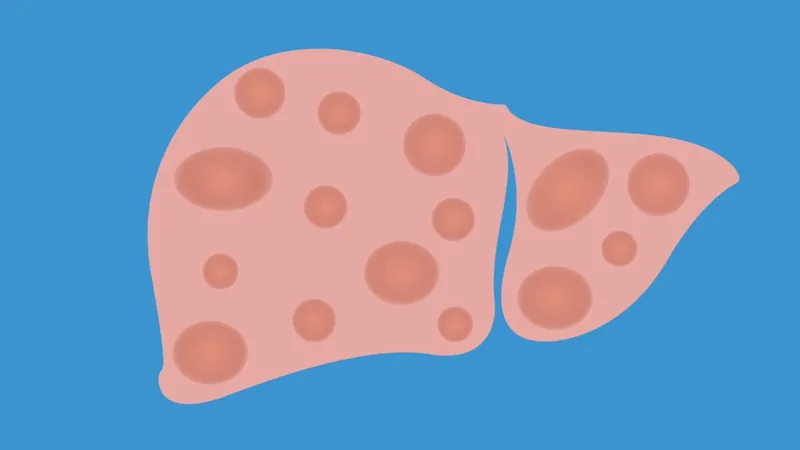
Revolutionary Liquid Crystal Test: Faster and More Accurate COVID-19 Detection!
2025-09-01
Author: Rajesh
Imagine a world where COVID-19 tests are not only faster but shockingly more accurate than the traditional lateral flow tests. Enter the new liquid crystal technology that’s set to change the game!
You might not realize it, but liquid crystals are everywhere you look—from your smartphone screens to those nostalgic mood rings from the '90s. These unique materials lie somewhere between solid and liquid states, featuring rod-shaped molecules that align in a structured formation. When they're stimulated, say by electricity or temperature, the molecules shift, creating a dazzling visual effect.
In the groundbreaking COVID test, the action begins when the SARS-CoV-2 spike protein binds to a metallic surface, causing the liquid crystals to reorganize. This chain reaction allows a small change to resonate across a larger area, enhancing sensitivity. Karthik Nayani, a chemical engineering professor behind the research, notes, "That's the beauty of liquid crystals. You can capture these events on the surface and transmit them over much larger distances."
In exciting trials, Nayani’s team used genetically modified yeast to express the COVID spike protein. Astonishingly, they achieved visible results with just 2,000 copies of the spike protein per milliliter—a saliva sample from an infected person typically contains about 10,000 copies!
One significant advantage of this new test is its reversibility. Unlike conventional lateral flow tests, this sensor returns to its original state after introducing anti-SARS-CoV-2 antibodies, ensuring its specificity by reacting solely to the spike protein.
What does this mean for you? This innovative technology could lead to a rapid, inexpensive, at-home COVID-19 test—one that eliminates the anxiety of waiting for results while squinting at feeble lines!
But that's not all—these principles could pave the way for detecting other pathogens, some of which we haven't even identified yet. The research team states, "The design principles enable the sensor to detect a range of analytes but crucially also novel pathogens for which specific binding interactions are unknown."
Additionally, this incredible technology could be utilized to swiftly identify chemical threats like nerve agents, pesticides, and harmful gases, vastly expanding its application scope. Nayani dreams of a future with airborne detection capabilities, highlighting the potential to protect our health without any physical contact!


 Brasil (PT)
Brasil (PT)
 Canada (EN)
Canada (EN)
 Chile (ES)
Chile (ES)
 Česko (CS)
Česko (CS)
 대한민국 (KO)
대한민국 (KO)
 España (ES)
España (ES)
 France (FR)
France (FR)
 Hong Kong (EN)
Hong Kong (EN)
 Italia (IT)
Italia (IT)
 日本 (JA)
日本 (JA)
 Magyarország (HU)
Magyarország (HU)
 Norge (NO)
Norge (NO)
 Polska (PL)
Polska (PL)
 Schweiz (DE)
Schweiz (DE)
 Singapore (EN)
Singapore (EN)
 Sverige (SV)
Sverige (SV)
 Suomi (FI)
Suomi (FI)
 Türkiye (TR)
Türkiye (TR)
 الإمارات العربية المتحدة (AR)
الإمارات العربية المتحدة (AR)